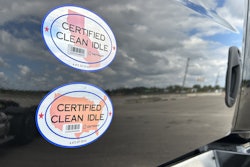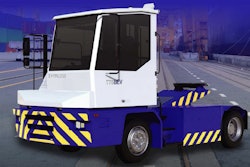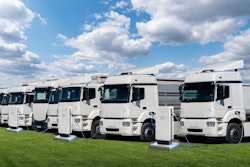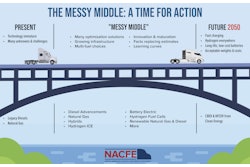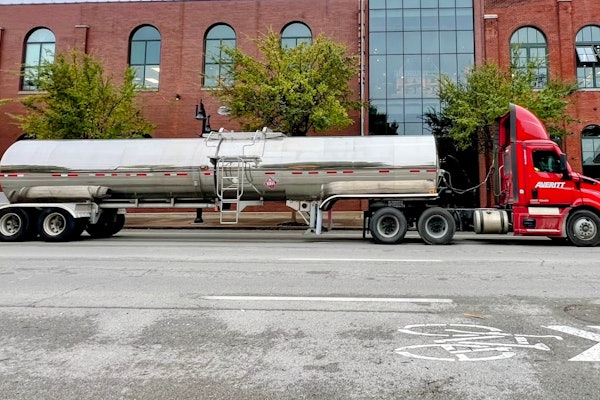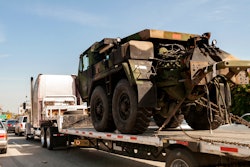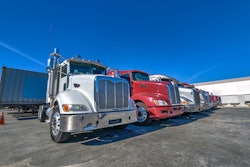We tend to be assaulted by misinformation from people and groups protecting their vested interests by pushing false narratives.
Attempting to provide unbiased technical information on all trucking technologies is a daily NACFE goal. Sometimes others don’t see it, choosing to read only the articles about one technology and missing the others, but we try. In the last few years, we’ve written reports on natural gas, hydrogen, electric, diesel, intermodal, regional haul, autonomous vehicles, and more. The current Run on Less - Messy Middle is trying to cover all the major Class 8 powertrains used in long-haul operations.
That long-haul term is used and abused a lot and often adds to confusion and misunderstanding.
The key goal of misinformation campaigns is to create doubt and confusion about a topic. It’s a well established mechanism. Just look at how big tobacco fought to discredit cancer health research for decades. There were groups supporting pesticides like DDT when the factual evidence was demonstrably showing it was affecting wildlife. Thomas Edison funded a campaign in the early days of electricity to argue that AC power from his competitor was dangerous and would never work because it was counter to his DC system. Also, in the 1890s, John D. Rockefeller funded an information effort arguing that electric lighting was dangerous because it would ruin his monopoly on kerosene lighting.
Put enough noise in the system and you create a situation where average people can’t separate fact from fiction.
The thing with misinformation, propaganda if you will, is that giving it a spotlight just propagates the misinformation. Calling out false narratives only tends to publicize them. The statement that “any press is good press” is very accurate.
Misinformation occurs across the spectrum from supporters to detractors. And, misinformation from advocates is just as bad as misinformation from detractors.
It’s just as problematic that a new truck maker claims something is possible or coming “this year” only to find out later that it really wasn’t or didn’t. Claiming production will start in 20xx and then finding out it really is 20xx+10 does just as much damage as someone claiming electric trucks don’t work. Claiming an OEM has a working truck technology and then getting caught coasting it down a hill has major ramifications to industry credibility.
Social media has made experts out of all of us. With so many competing experts, how do you figure out what is factual? It starts with using your own eyes to see, it starts with requiring valid data be used to support claims, it starts with demanding more from the experts than opinions and hype.
I’ve read a lot of misinformation about how electrifying trucking is leaving small fleets behind. How the one or two truck owner-operator just can’t get into electric trucks. How they won’t work for them because they can’t do long haul.
On a recent trip, I found that OEMs are able to quickly put the small fleet owner into an electric truck through a fair market value lease. I found that public charging infrastructure has advanced to the point that a small fleet can operate from someone’s else’s depot without having to build out its own charging infrastructure or deal with utilities. I found skilled EV service support is readily offered from dealers and third parties. It’s not everywhere, but how to do it is being demonstrated in the real world today.
But back to the term long haul. It doesn’t seem to matter that those long hauls — trips over 500 miles per day — actually represents a pretty small number of trucks.
Pick a number, I’ve seen a wide range of data that says anywhere from 20% to 95% of trucking is less than 500 miles per day, or less than 250 miles per day. Much of this data originates from actual GPS tracking of vehicles. Other sources include legitimate fleet surveys by both detractors and supporters of zero-emission vehicles (ZEVs). The detractors don’t seem to understand that their own data says long haul is a pretty small group of operators. Lots of miles, but not so many trucks.
OEMs actually produce data on which types of trucks they sell and at least 40% of Class 8 semi-trucks made and sold each year are day cabs. That data comes from actual vehicle registrations in each state as reported by major industry sources like FTR, ACT Research, and others. It’s been that way for decades.
But just for grins, let’s grab a hugely conservative number and say that a quarter of Class 8 trucks spend their entire lives racking up less than 250 miles per day. That translates to OEMs needing to produce and sell 25% of annual production for that application, which means 50,000 to 75,000 new Class 8 trucks per year are intended to never exceed 250 miles per day.
That is a big number in trucking manufacturing. It is big enough to permit multiple OEMs to make and sell products. It is big enough that fleets can consider using a different technology. It is big enough that infrastructure investment can occur.
And yet a lot of propaganda says none of this is possible. That all trucks are driving more than 600 miles per day and there is no room for new technology, it’s too immature, the grid can’t support it.
Managements at every OEM now have production Class 8 electric trucks. The market has enough potential that for the first time in decades, we are seeing new OEMs enter North America. CALSTART’s ZETI tool shows there are more than 15 Class 8 zero-emission OEMs providing many models to the U.S. market. Some of these OEMs only make ZEVs. Established manufacturers like Volvo and PACCAR are already producing second or third generation ZEVs.
Apparently, the people that build and sell trucks have not got the memo that ZEVs are not viable. That there is no market. That they can’t do long haul and therefore should not be built.
But there’s no infrastructure. Really? The CALSTART data includes registrations of ZEVs in all states. Its report, Zeroing in on Zero-Emission Trucks, documents that there are zero-emission commercial vehicles operating in all 50 states — yes even Alaska and Hawaii. States like Texas and Florida rank second and third respectively with more than 4,000 zero-emission trucks registered. Those include Class 2b-8, so delivery vans, yard trucks, step vans, box trucks, and, yes, semi-trucks.
While the majority of these ZEVs today, are smaller class vehicles, the Class 8 segment is steadily growing. The American Transportation Research Institute (ATRI) reports in its recent Operational Cost of Trucking report that in the surveyed group, 10.4% had used battery electric trucks and another 3.2% had used hydrogen fuel cell ones.
Clearly there is no infrastructure out there to support what Calstart reports as 54,000 or more commercial ZEVs that are in all 50 states. They must all be sitting at the back fence. Those trucks you see on the road are figments of your imagination.
The number of ZEVs in the bigger scheme of millions of operational commercial vehicles driving U.S. roads is small, but it is no longer zero. It has grown to percentage points measurable by registration data. It is no longer some CEO’s future vision; these trucks and infrastructure are real, today. Real fleets are using these trucks in commercial operations.
Whether you look at reports from Geotab on daily route length or any of many other sources, they all show that significant numbers of trucks operate below what could be considered long haul. If you go back a couple decades, the story was the same. I found a 2003 report that uses U.S. Census Bureau data obtained from fleets and found that 95% of fleets were traveling less than 250 miles per day. Or look at ATRI’s recent data which graphs miles per day reported by their surveyed fleets. Trends are also being reported by major freight players like CH Robinson and Prologis.
Misinformation is just another form of information in the flood of information we get each day. It’s always been there; there is nothing new. It can be biased, inaccurate, or fact based. It can represent the views of vested interests.
The critical thing with all information is that each of us gets to decide what we trust and distrust.
The fact that we each get to decide is built into our first amendment right to free speech. Free speech means also free listening. The founding fathers seem to have entrusted all of us to figure it out amid all the noise. Everyone is expected to have their opinion.
I suggest you start by looking at data.




